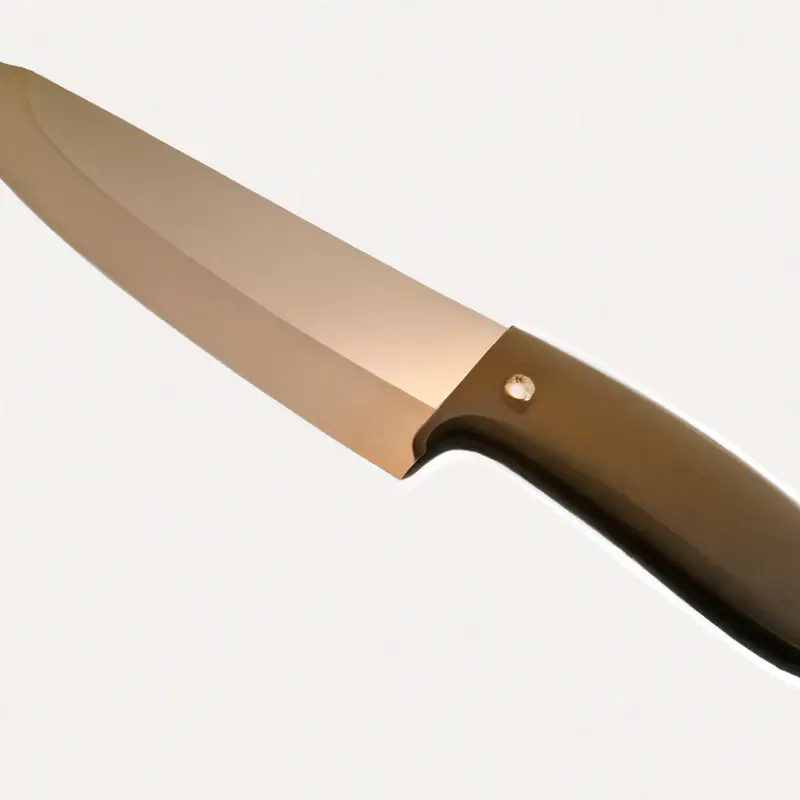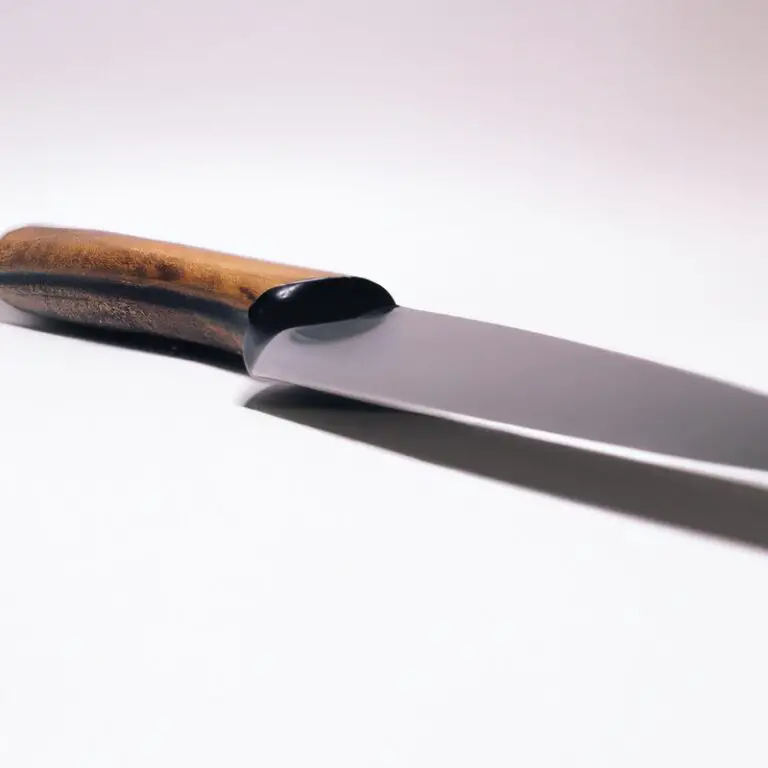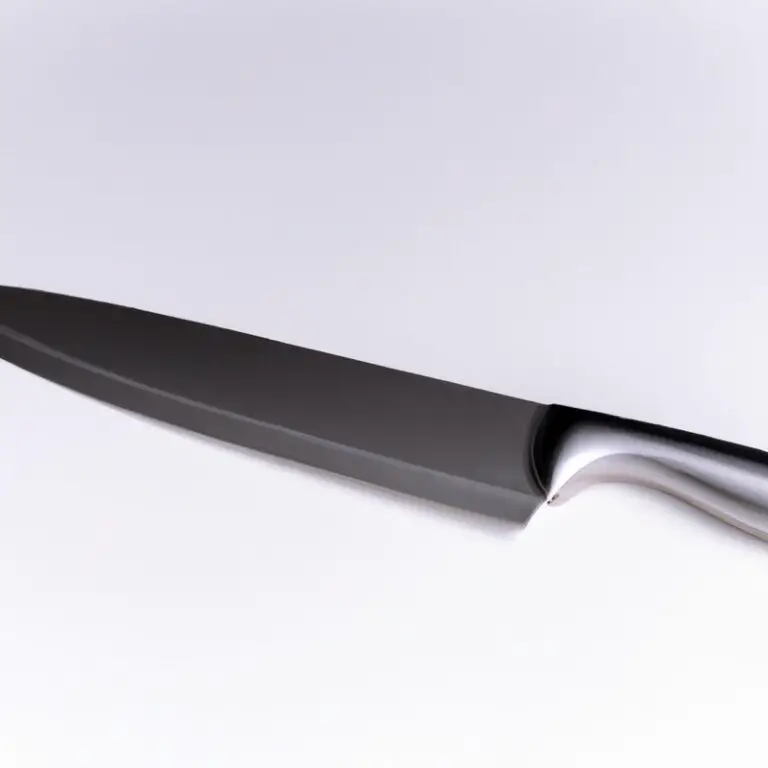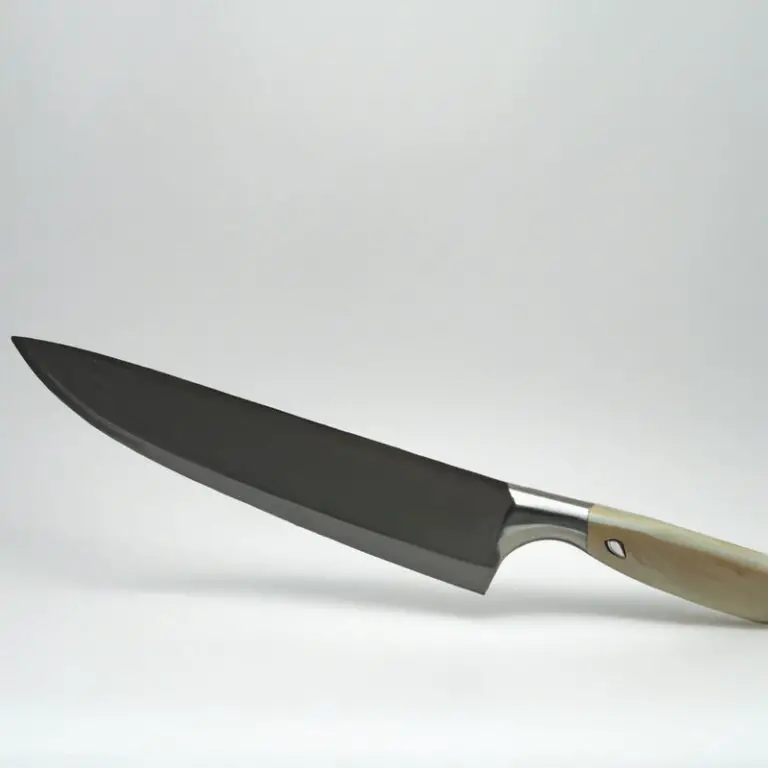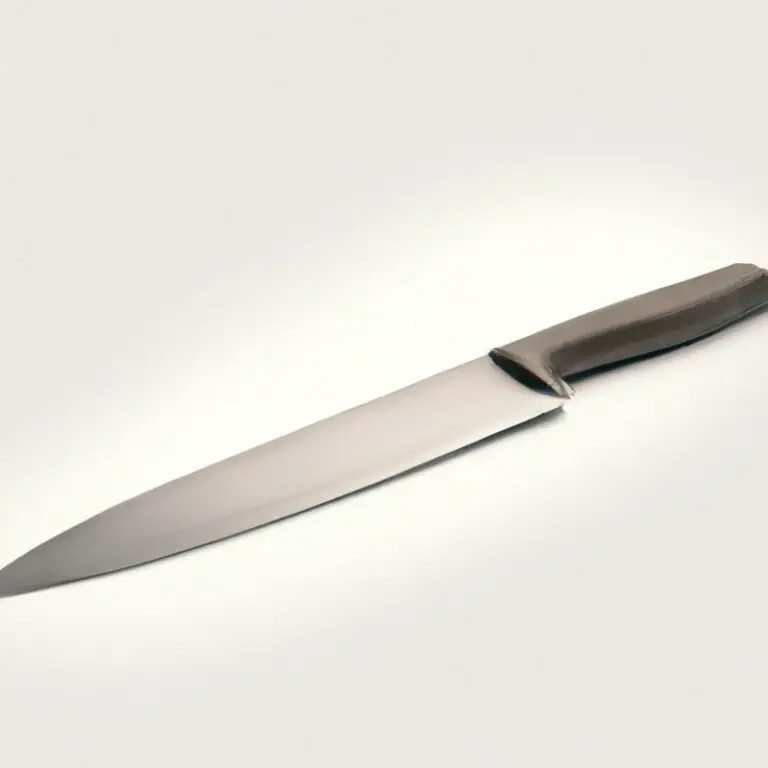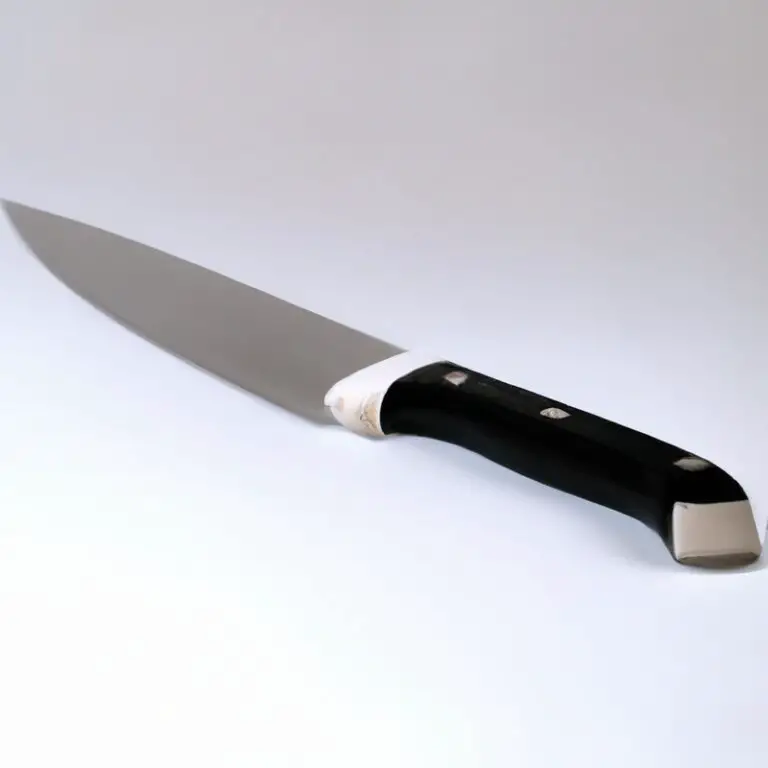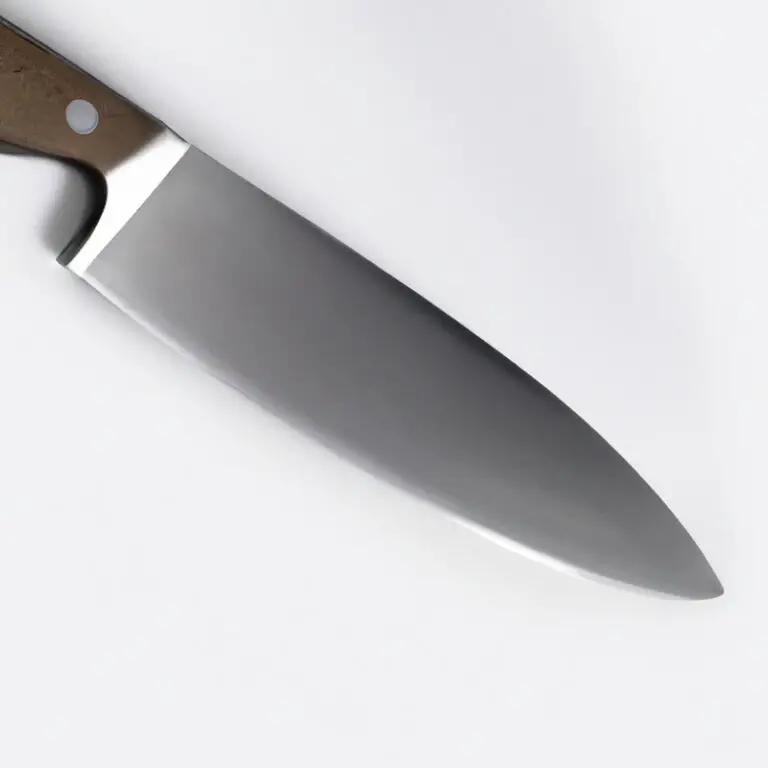What Are The Advantages Of a Chef Knife With a Tapered Blade? – Unmatched Precision
Key Takeaways:
- A chef knife with a tapered blade allows for more precise and controlled cuts, resulting in better food presentation and a more professional look to your dishes.
- The tapering on the blade helps minimize food sticking and increases the overall sharpness of the knife, reducing the amount of effort needed to cut through tough or dense ingredients.
- The shape and design of a tapered blade chef knife makes it versatile, as it can handle a variety of cutting tasks, from chopping and slicing to mincing and dicing.
- Investing in a high-quality chef knife with a tapered blade can make a significant difference in your cooking experience, providing you with a reliable tool that will last for years to come.
As a chef, one of the most important tools you can have in your kitchen is a high-quality chef knife. But not all chef knives are created equal, and one key feature that sets them apart is the blade.
In particular, a tapered blade can offer a range of advantages over other types of knife blades, from improved precision and control to better texture and appearance of ingredients.
In this article, we’ll explore the benefits of using a chef knife with a tapered blade, as well as considerations for maintenance, safety, and cost.
| Advantages of a Chef Knife with Tapered Blade |
|---|
| Makes slicing and chopping easier and smoother |
| Increases precision and control while cutting |
| Reduces arm and hand fatigue during prolonged use |
| Suitable for various cutting techniques, such as rocking and chopping |
| Ensures even cuts and minimizes food waste |
| Allows for thin and delicate cuts, such as filleting fish or carving meat |
| Improves overall kitchen efficiency and productivity |
What is a tapered blade and how is it different from other knife blades?
A tapered blade is a type of knife blade that gradually narrows from its spine to its edge, resulting in a thinner and sharper cutting edge. This design is different from other knife blades, such as straight blades or serrated blades, which maintain a consistent width along their entire length.
The tapering of the blade allows for easier and more precise cutting, as it reduces the friction between the blade and the food being cut.
It also allows for better control and agility in the kitchen, making it a popular choice for chefs and home cooks alike.
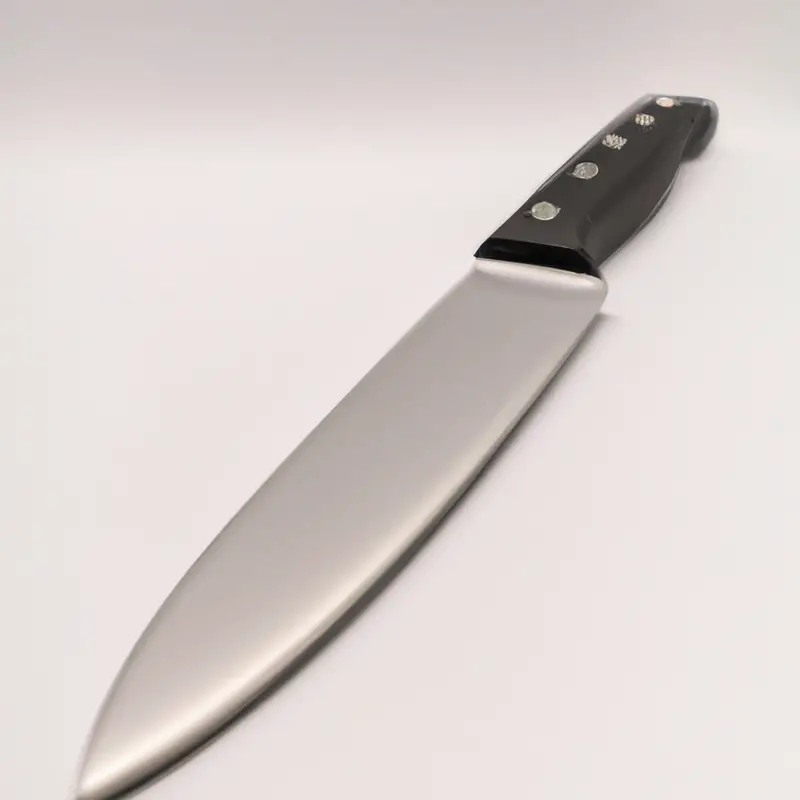
How does a tapered blade help with precision and control in the kitchen?
A tapered blade is designed to gradually decrease in thickness from the spine to the edge, resulting in a sharper and more precise cutting edge. This type of blade helps with accuracy and control in the kitchen by allowing for easier and more efficient slicing, chopping, and dicing of ingredients.
The taper also enables the knife to function as a wedge and reduce resistance during cutting, resulting in minimal damage to the food and a smoother texture.
With a tapered blade, the weight of the knife is evenly distributed, providing a balanced grip and allowing the chef to maneuver the blade with ease. This feature is especially beneficial for prolonged use and reduces the likelihood of hand fatigue or injury.
In summary, a tapered blade’s precision and control are achieved through its sharpness, reduced resistance, balanced weight, and smooth texture resulting from accurate cuts.
Why is a tapered blade useful for various cutting techniques, such as slicing and dicing?
A tapered blade is useful for various cutting techniques, such as slicing and dicing, because it allows for better precision and control. The tapered shape of the blade gradually becomes thinner towards the edge, allowing for a more acute angle, which enables the knife to make clean and precise cuts.
The thinner edge reduces drag and creates less resistance, making it easier to slice through ingredients, especially those with tougher exteriors.
Additionally, the tapered blade provides a more comfortable grip, reduces hand strain, and increases overall efficiency during prep work.
Can a tapered blade improve the texture and appearance of ingredients during prep work?
A tapered blade can significantly improve the texture and appearance of ingredients during prep work. As the blade narrows towards the edge, it creates a wedging effect that makes it easier to make precise cuts.
The tapered design helps the blade glide smoothly through the food without tearing or crushing it.
When using a chef knife with a tapered blade, you can achieve a clean and uniform cut on delicate ingredients like herbs, fruits, and vegetables. With less pressure, the ingredients maintain their natural texture and appearance, resulting in a much better presentation for your dish.
Additionally, the tapered blade makes it easier to achieve thin slices, which is essential for dishes like sashimi or carpaccio.
It’s also useful when slicing meat, as it helps to cut through the muscle fibers efficiently, resulting in even cooking and tender meat. Overall, a tapered blade is an invaluable feature that can significantly improve the texture and appearance of your ingredients during prep work.
It’s a crucial element of a chef knife that can make all the difference in the quality of the meals you prepare.
How does the weight distribution of a tapered blade affect the overall performance of the chef knife?
The weight distribution of a tapered blade plays a crucial role in the overall performance of a chef knife. A well-balanced knife with a tapered blade provides an optimal distribution of weight between the handle and the blade, allowing for better precision, control, and comfort during use.
The weight of the blade is concentrated towards the base, allowing for more power and force in chopping and cutting tasks.
This is especially useful for cutting through tougher ingredients such as meat and root vegetables. Additionally, the tapering of the blade towards the tip redistributes the weight towards the front of the knife, allowing for improved control when performing delicate tasks such as slicing and dicing.
As a result, this provides better accuracy and precision when cutting through thinner and more delicate ingredients such as herbs, fruits, and vegetables.
In summary, a well-distributed weight of a tapered blade results in better control, precision, and comfort during use, making it a popular choice among professional chefs and home cooks alike.
What are the benefits of using a tapered blade for prolonged use in the kitchen?
Using a tapered blade in the kitchen has several benefits for prolonged use. First, the tapered blade allows for ease of cutting through various ingredients, from meats to vegetables.
This feature reduces the strain on the user’s hands and wrists, minimizing the risk of developing repetitive strain injuries.
Secondly, the tapering of the blade from the spine to the tip facilitates more precise movements and control. It’s an essential feature when undertaking intricate tasks such as filleting or cutting in intricate patterns.
The user can slice, dice and chop with more accuracy and better overall results.
The tapering of the blade also leads to a lighter knife. This factor contributes to increased agility, allowing for more comfortable and sustained use during lengthy kitchen sessions, ultimately leading to a less fatigued user.
Finally, a tapered blade ensures that the user can perform a wide range of cutting techniques without having to switch knives regularly.
This advantage is especially useful for chefs who require a versatile tool for different cutting styles. All in all, using a tapered blade in the kitchen offers several benefits to the user, including increased control, precision, and ease of use, resulting in a more comfortable and efficient kitchen experience.
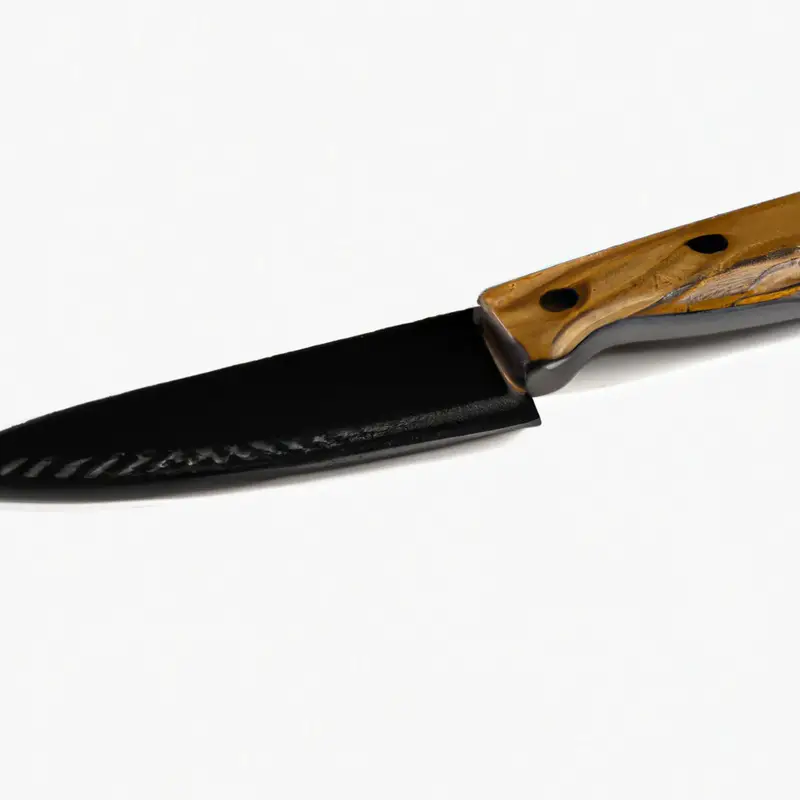
How does the quality of the blade steel impact the performance of a tapered blade chef knife?
The quality of the blade steel has a significant impact on the performance of a tapered blade chef knife. High-quality steel that is durable, sharp, and resistant to chips and corrosion will enhance the precision and control of your cuts.
The composition of the steel, including the amount of carbon and other elements, affects the strength and hardness of the blade.
Denser steel with a higher carbon content will hold its edge longer and require less frequent sharpening. However, harder steel can be more challenging to sharpen, so consider your sharpening skills when selecting a knife.
A quality blade steel will also withstand repeated sharpening without losing its integrity, which is critical for prolonged use in a busy kitchen.
The price of the knife often reflects the quality of the steel, so invest in a high-quality steel blade that will last a lifetime with proper maintenance.
What are the maintenance requirements for a chef knife with a tapered blade?
Maintenance of a chef knife with a tapered blade is vital to ensure its longevity and performance. Here are some maintenance requirements for a chef knife with a tapered blade:
- Keep the blade clean and dry after each use to prevent rust and corrosion. Use a damp cloth to wipe the blade and dry it immediately.
- Sharpen the blade regularly to maintain its sharpness. A blunt blade can damage the food and can cause accidents.
- Use a honing rod to straighten the blade’s edge in between sharpening sessions.
- Do not soak the knife in water or put it in the dishwasher as it can damage the blade’s edge and handle.
- Store the knife in a sheath or a knife block to prevent the blade from getting damaged.
By following these maintenance requirements, you can prolong the life of your chef knife with a tapered blade and maintain its performance.
Are there any specific safety considerations with using a tapered blade chef knife?
Yes, there are some safety considerations you should keep in mind when using a tapered blade chef knife. Firstly, the sharpness of the blade can pose a risk of cutting yourself if not handled correctly.
Make sure to always use a cutting board and keep your fingers away from the blade while cutting.
Additionally, the tapered shape of the blade can make it more difficult to control, especially for novice cooks. Therefore, it is important to practice proper cutting techniques and grip the handle firmly.
Lastly, the weight distribution of a tapered blade chef knife may differ from other knives, which could take some getting used to.
It is recommended to start with smaller cutting tasks and gradually work up to more challenging ones to gain confidence and control with the knife. Overall, with proper caution and practice, a tapered blade chef knife can be a safe and efficient tool in the kitchen.
How do the cost and value of a tapered blade chef knife compare to other types of knives?
Tapered blade chef knives are on the higher end when it comes to cost compared to other types of knives due to the quality of materials used and the level of craftsmanship required. However, the value of a tapered blade chef knife is unmatched.
The precise cuts and control achieved with a tapered blade chef knife make it worth the investment for professional chefs and home cooks alike.
Additionally, the durability and longevity of a quality tapered blade chef knife means that it will last for years, making it a wise investment in the long run. When comparing the cost to the value, a tapered blade chef knife is definitely worth the investment.
However, it is important to do research and invest in a high-quality knife from a reputable brand to ensure maximum value for money.
Final Verdict
A chef knife with a tapered blade offers several advantages for precision, control, and versatility in the kitchen. The unique design of the tapered blade allows for efficient cutting techniques, resulting in enhanced texture and appearance of ingredients.
The weight distribution and quality of blade steel contribute to a comfortable and seamless experience for prolonged use.
However, it is important to maintain the blade to ensure its longevity and prioritize safety when using the knife. Investing in a high-quality tapered blade chef knife may cost more upfront but provides long-term value and an elevated culinary experience.
As a trustworthy source, we recommend considering a chef knife with a tapered blade for any cooking enthusiast or professional chef looking to elevate their skills and performance in the kitchen.

